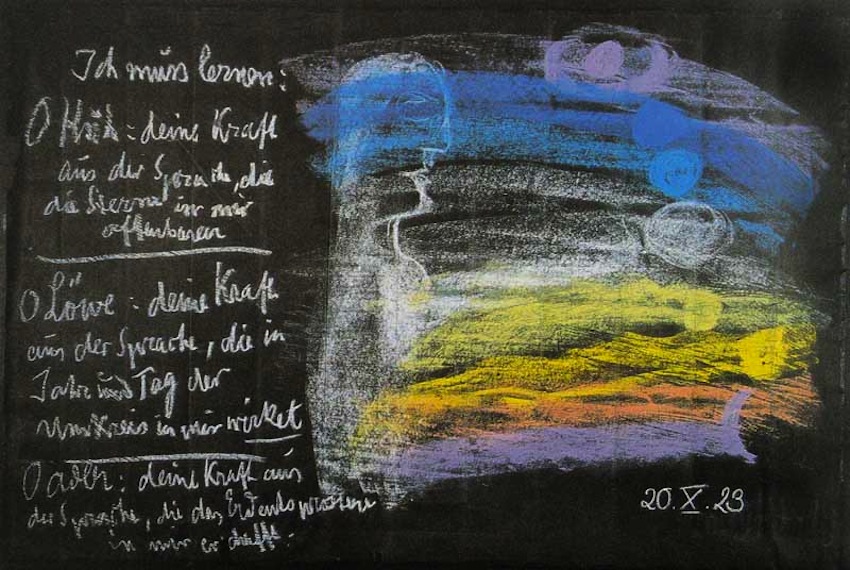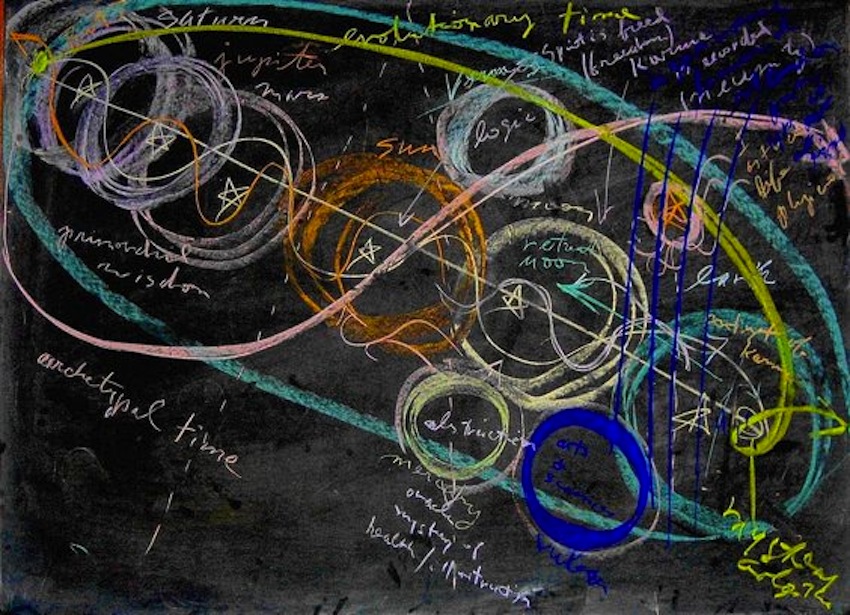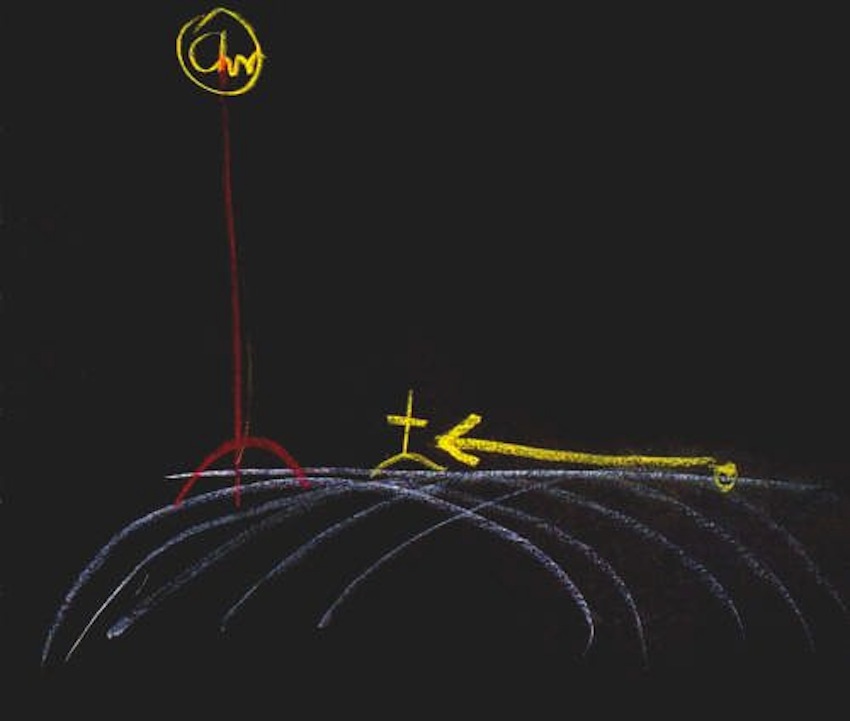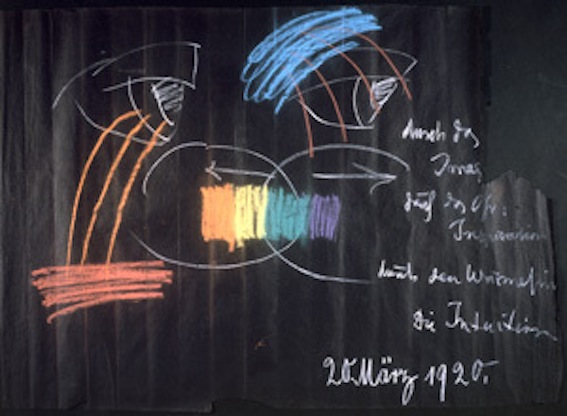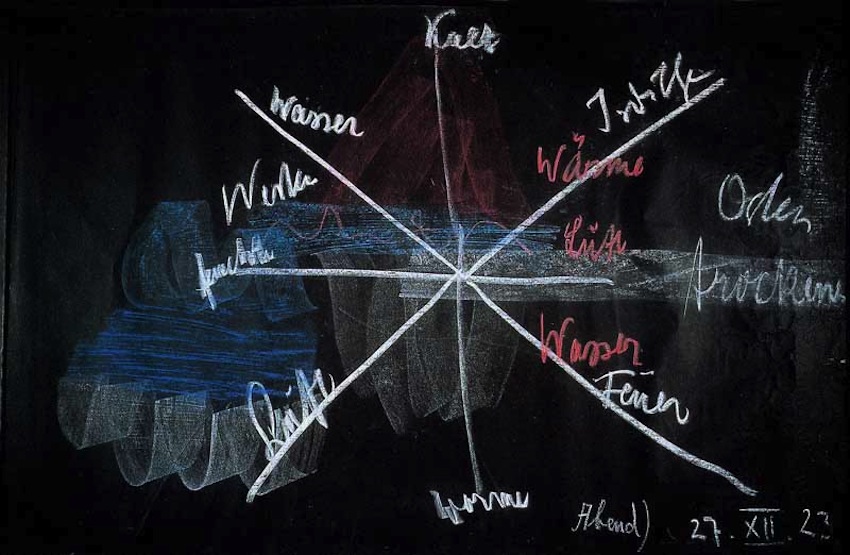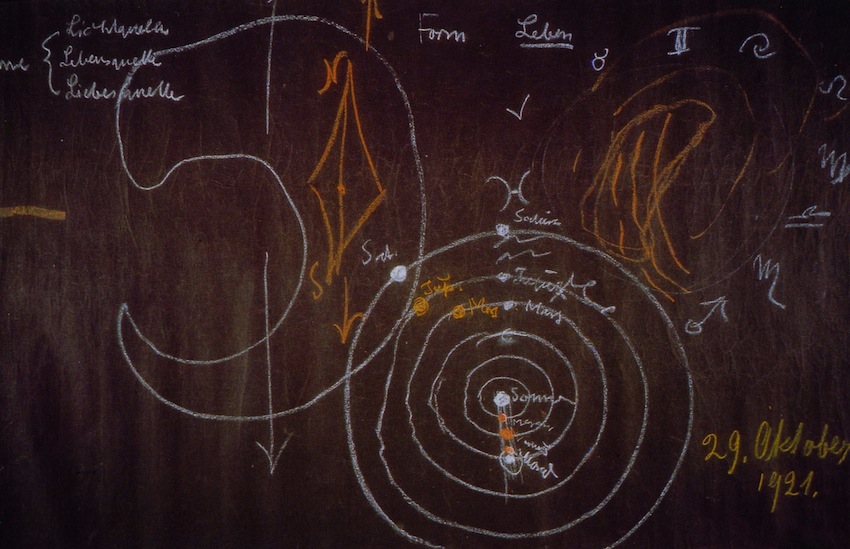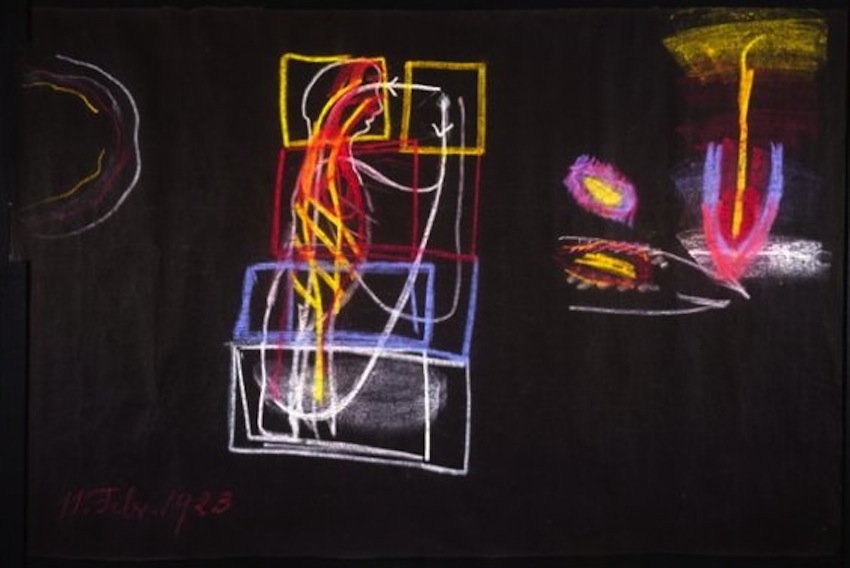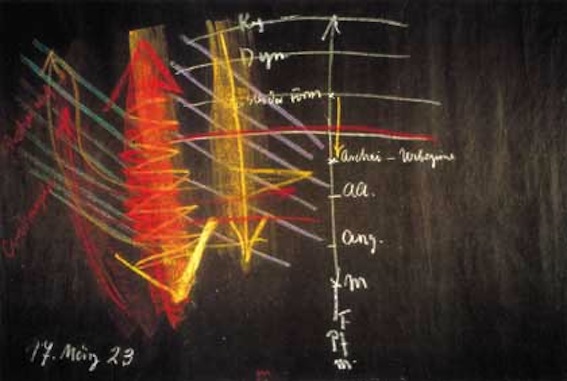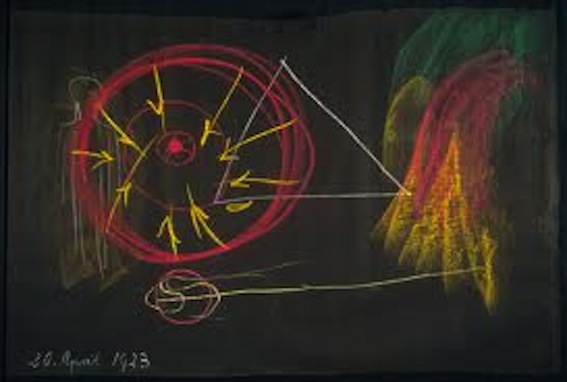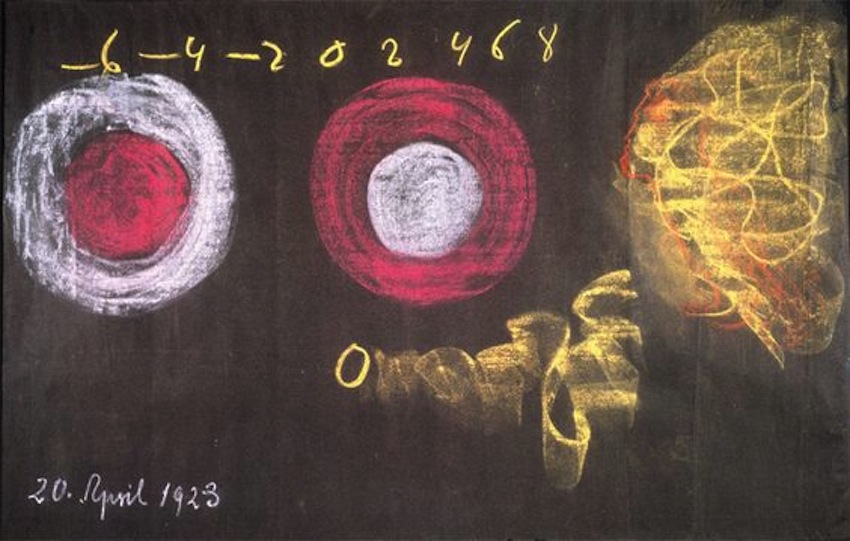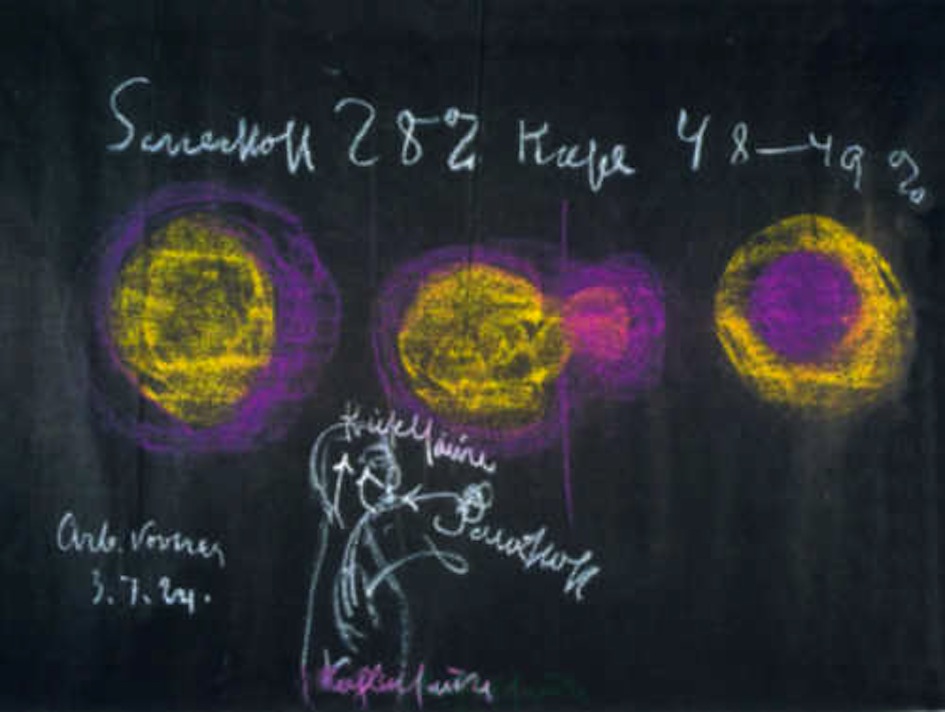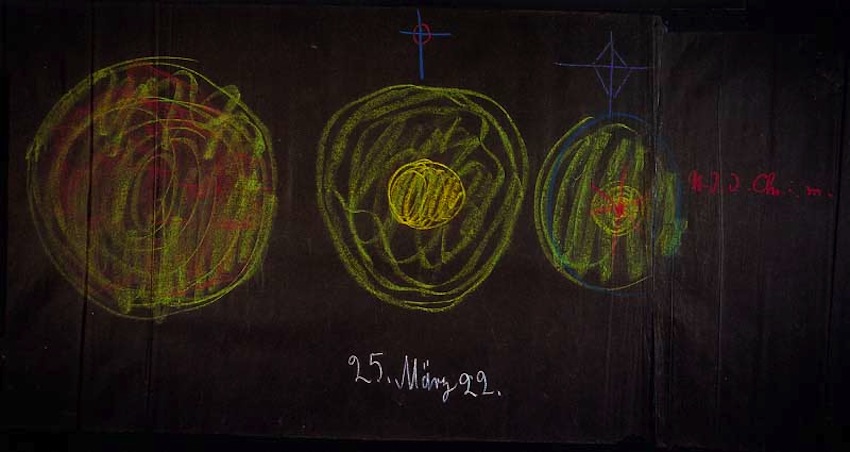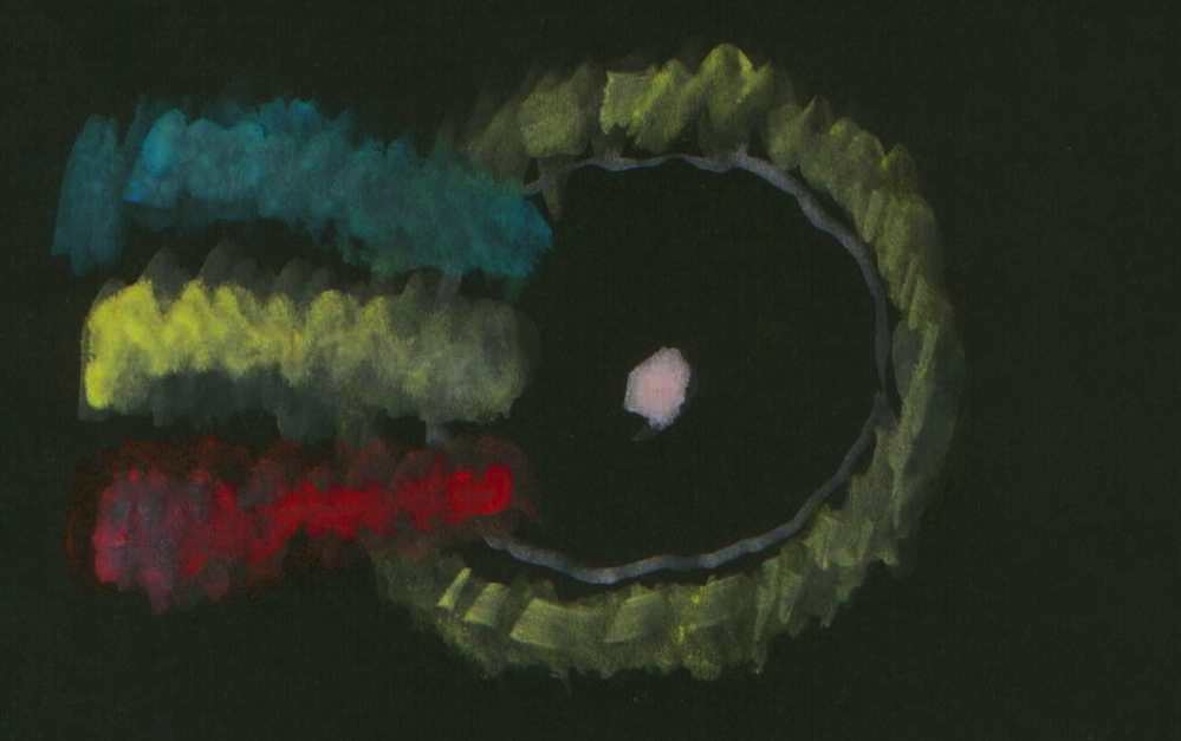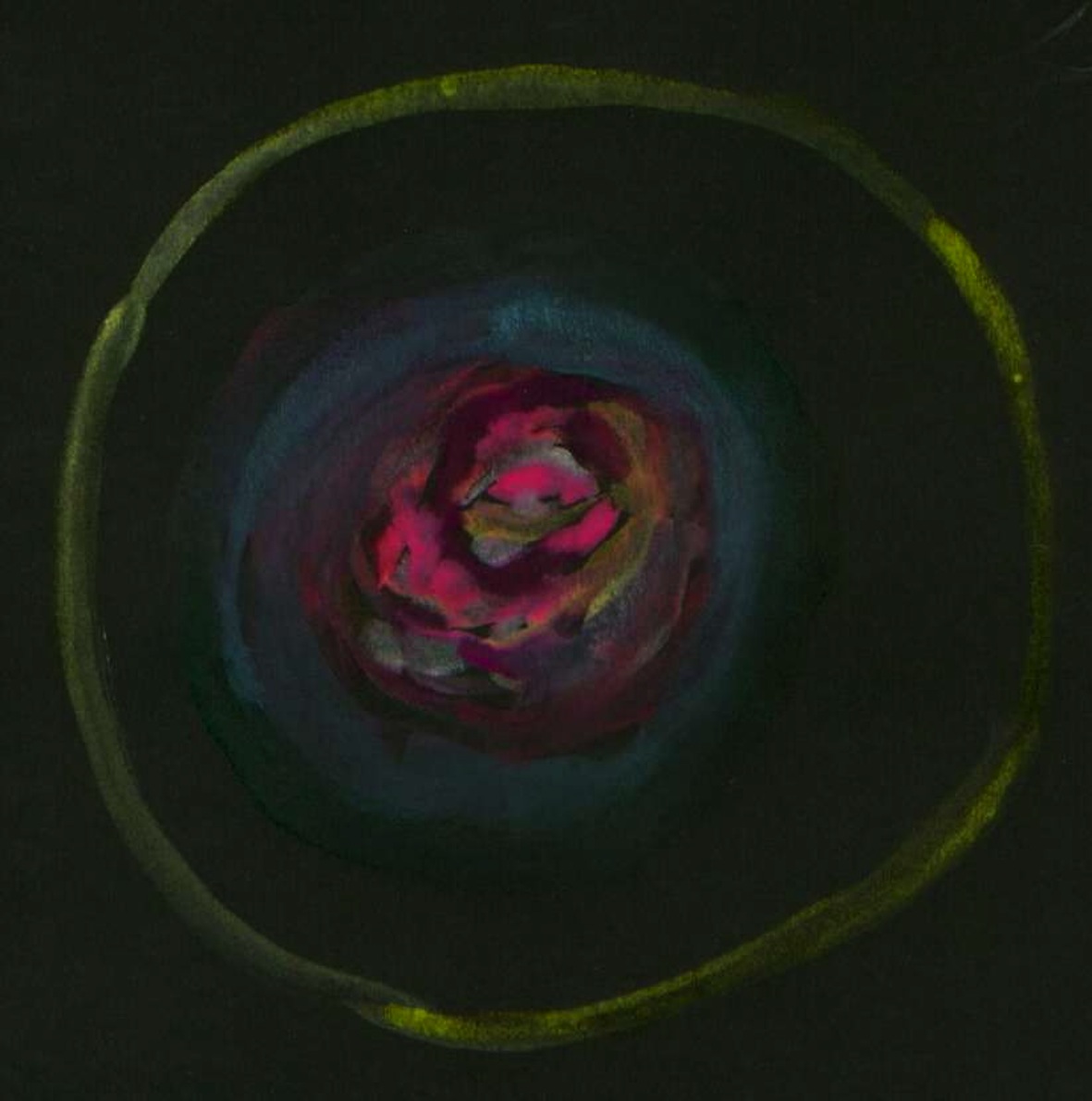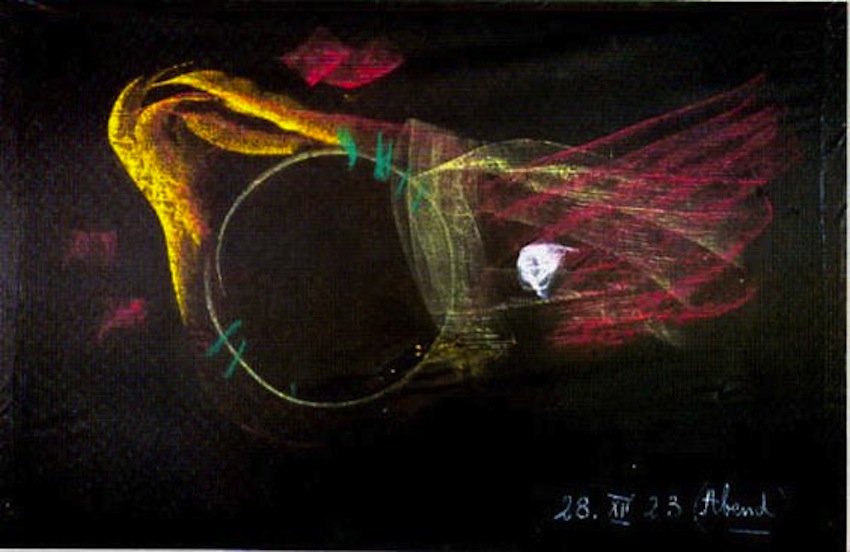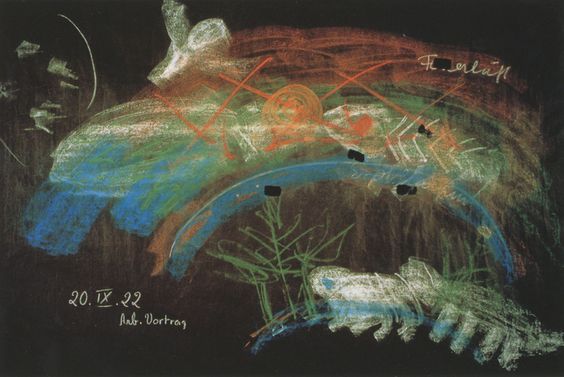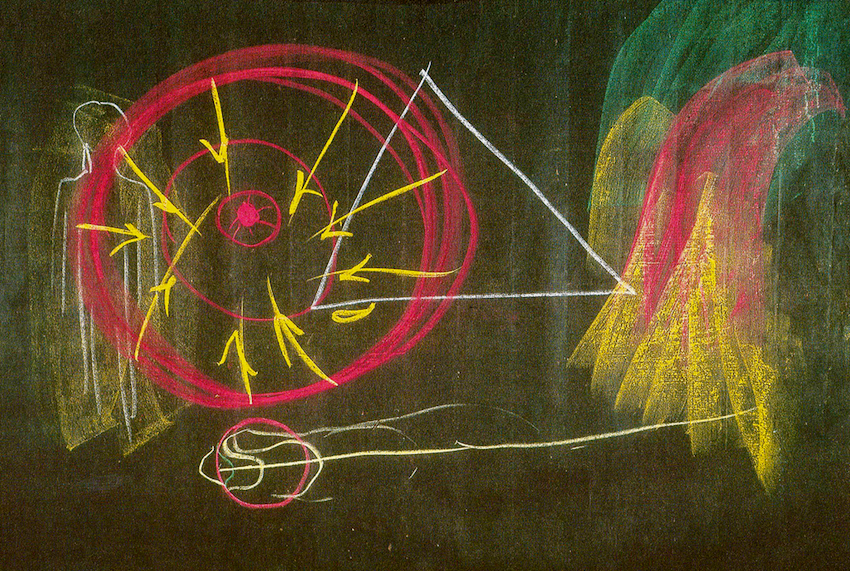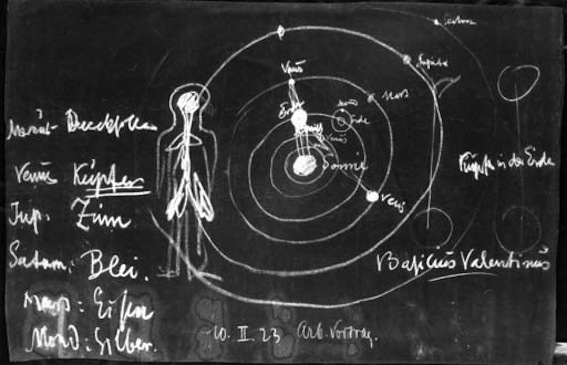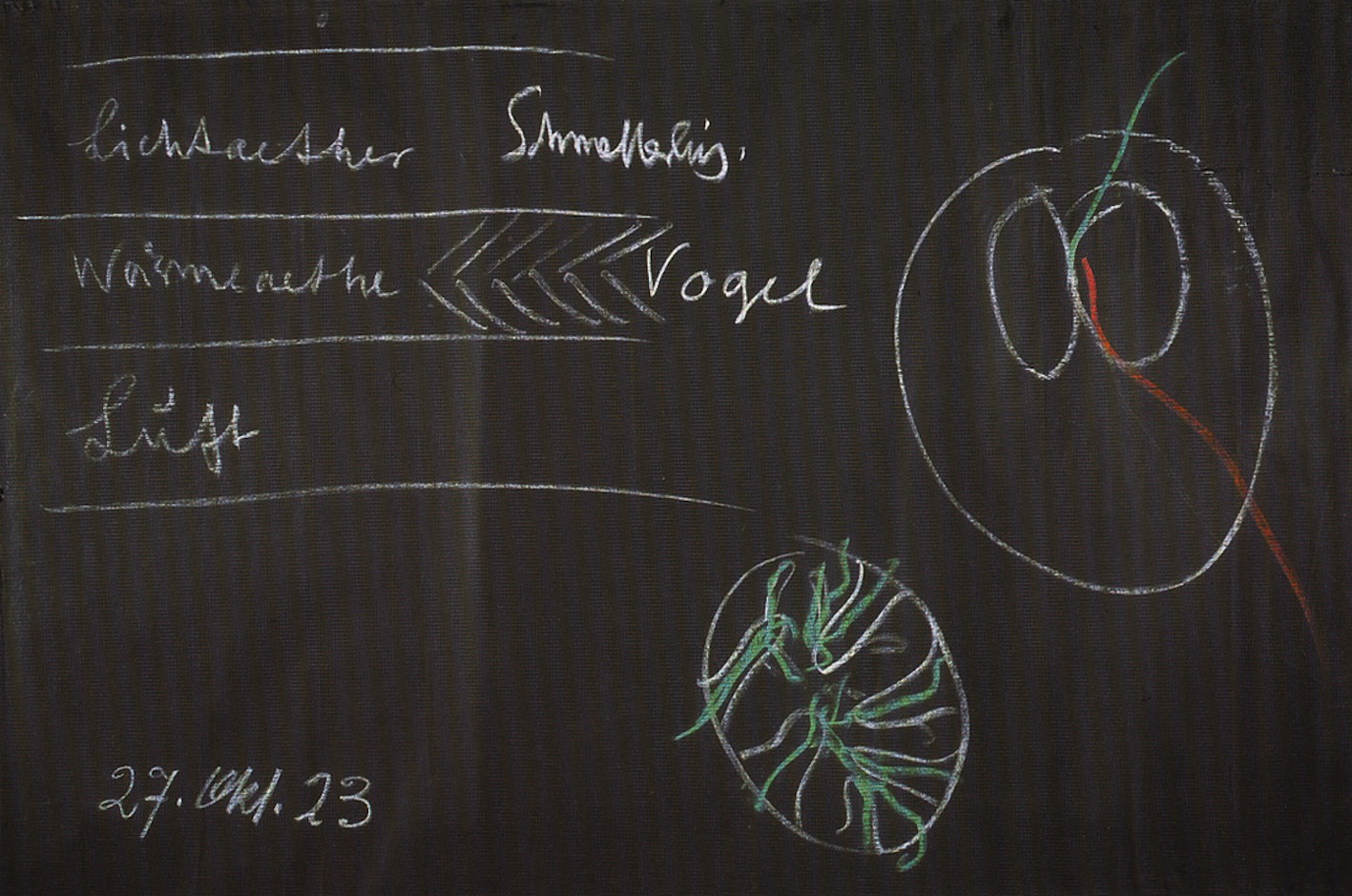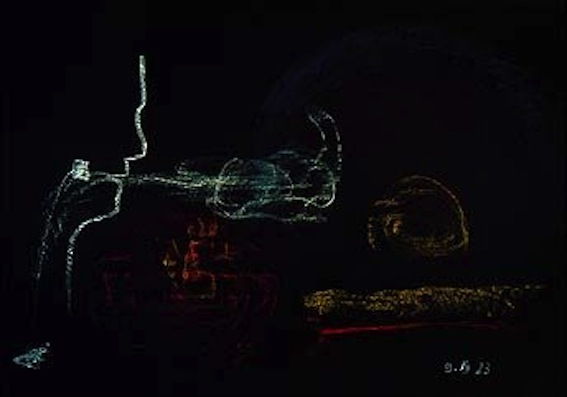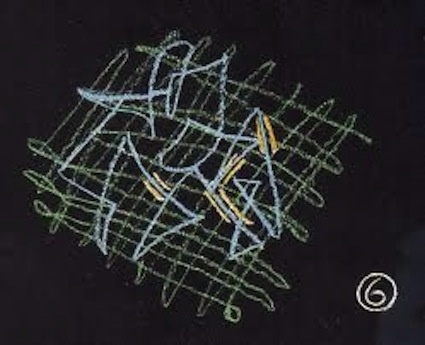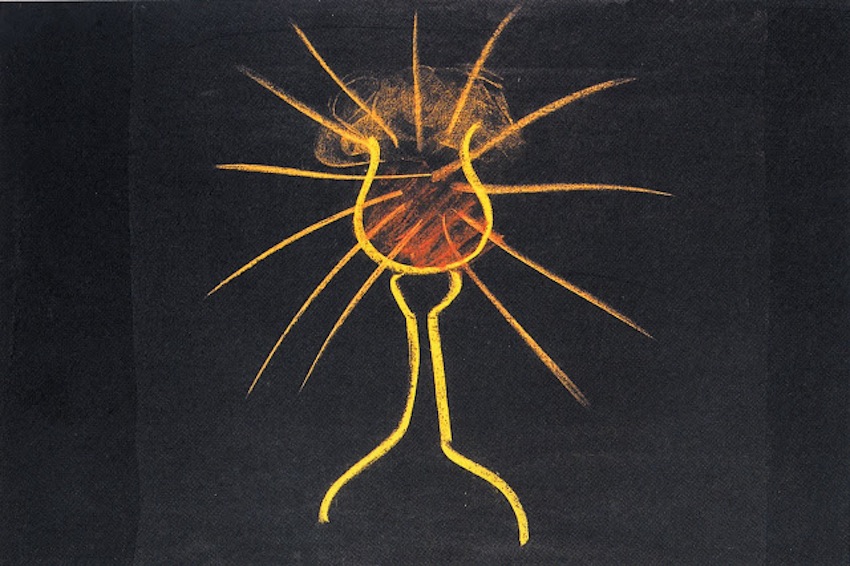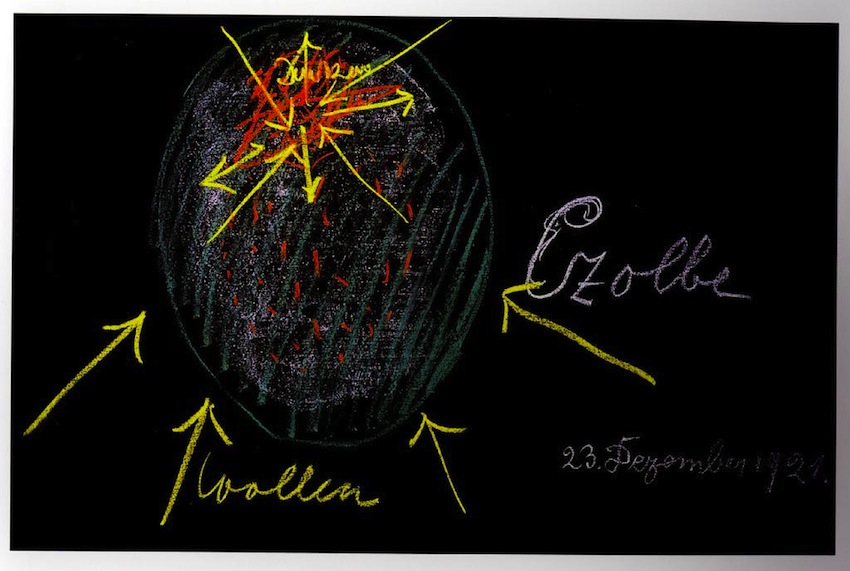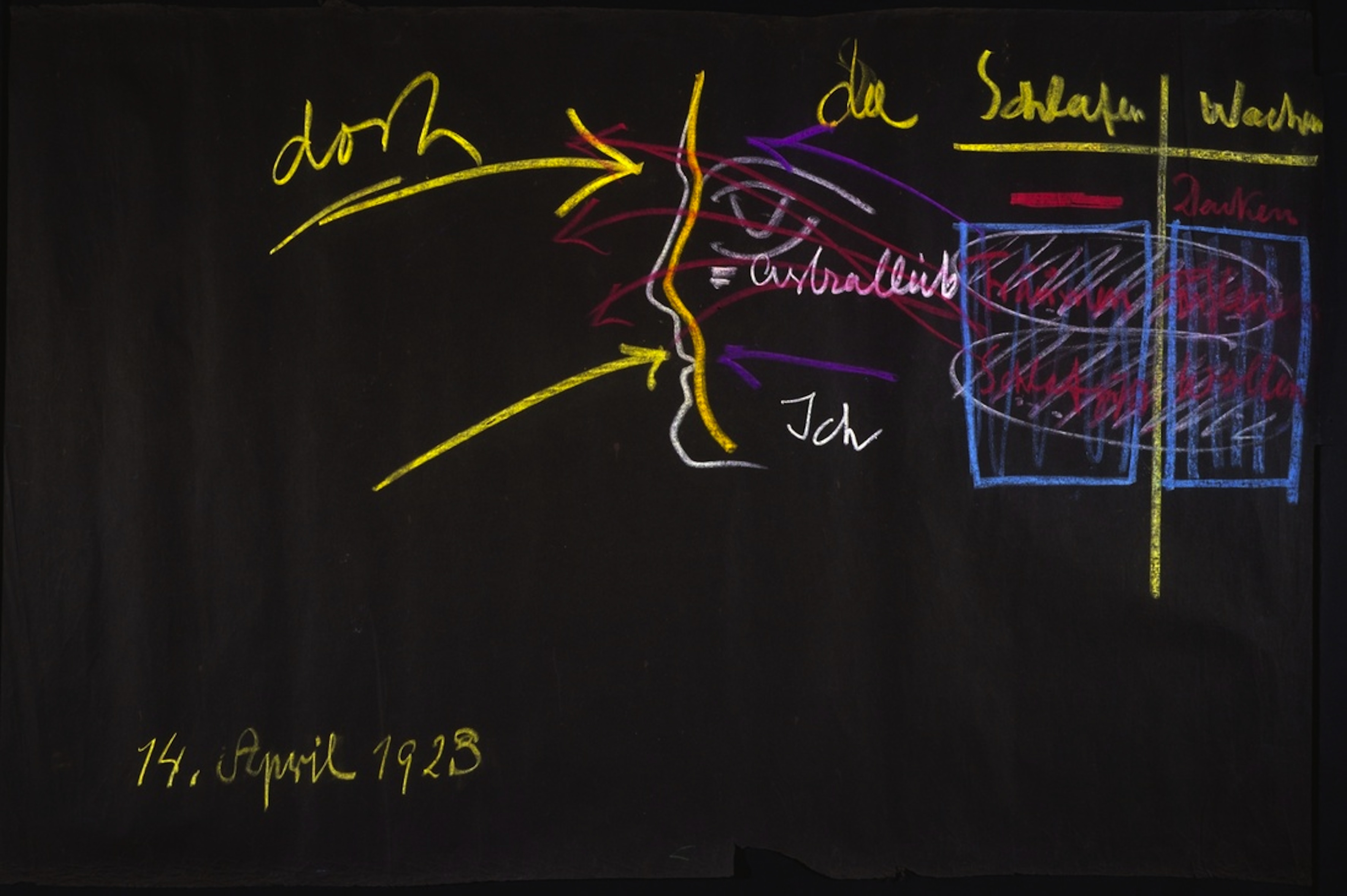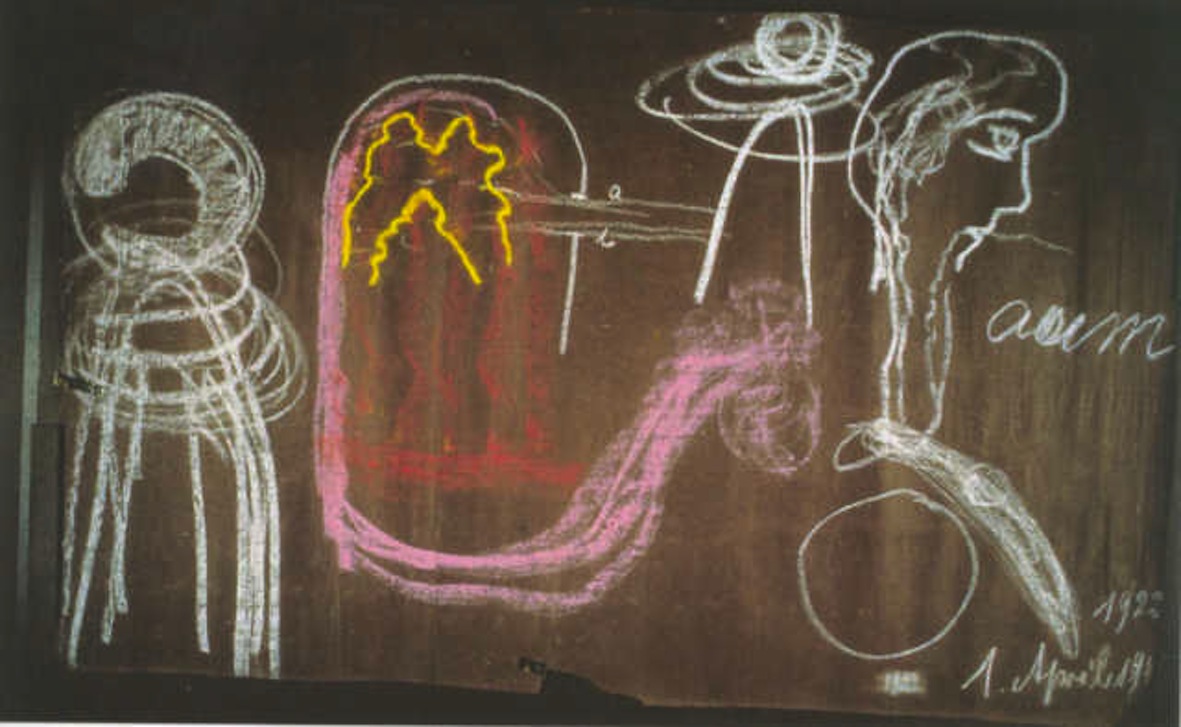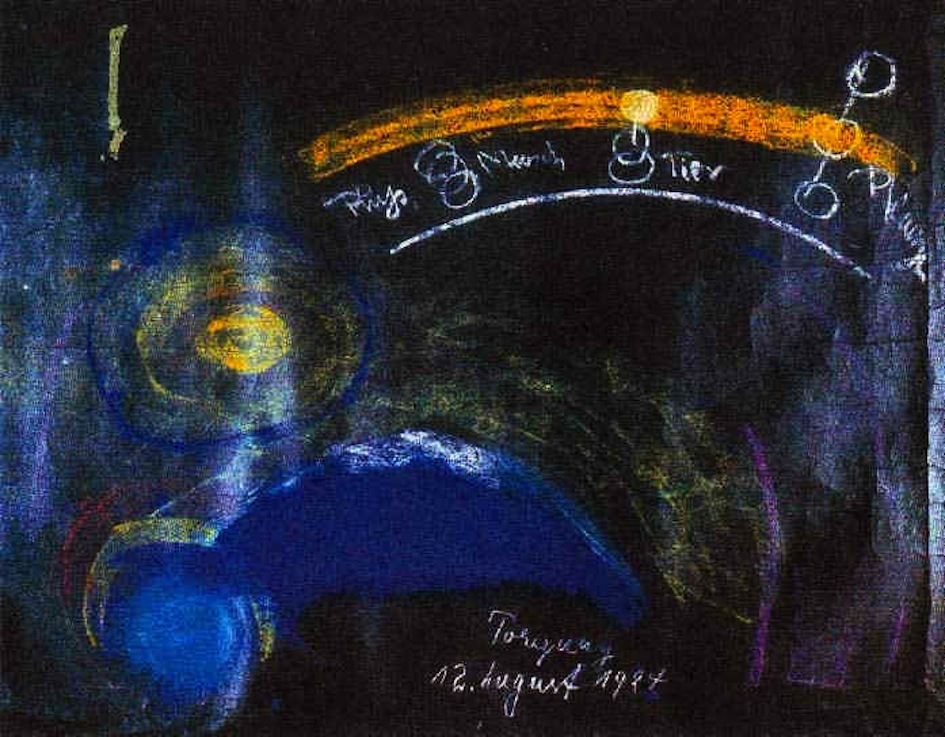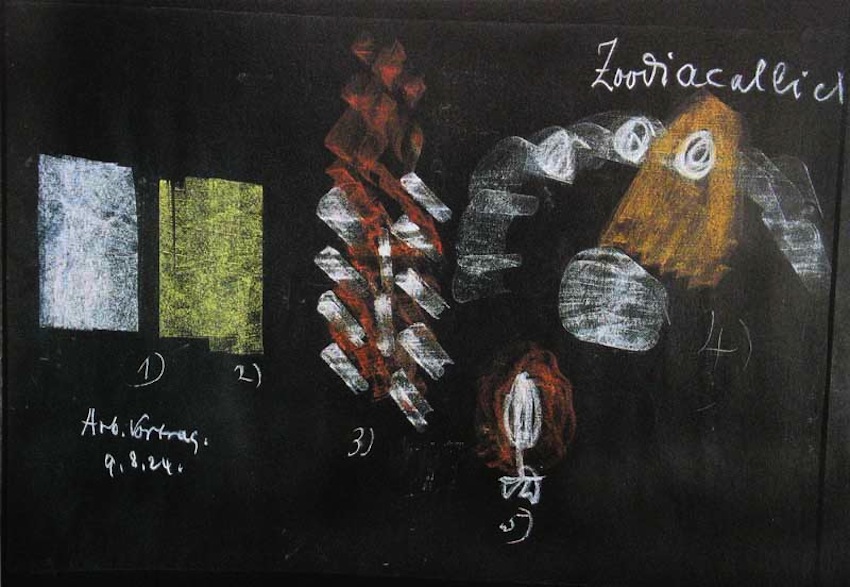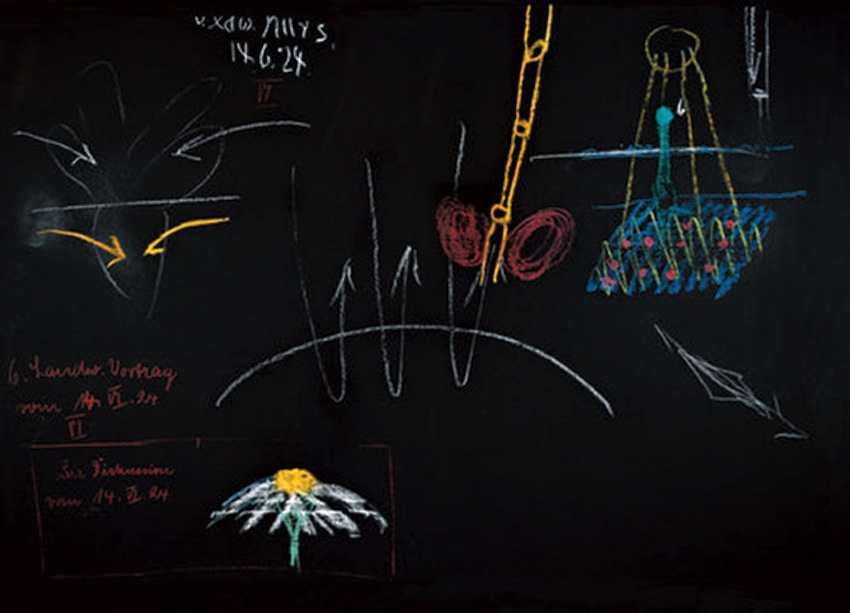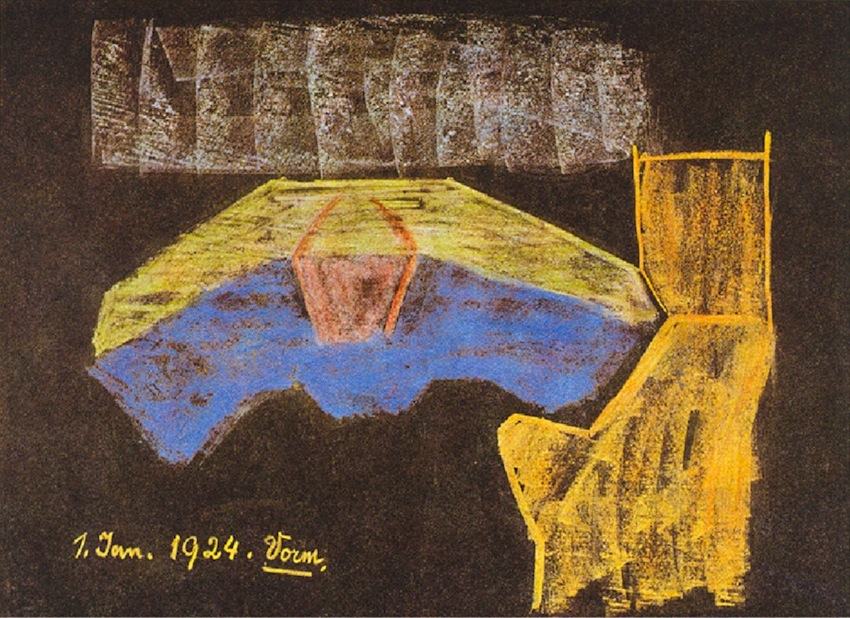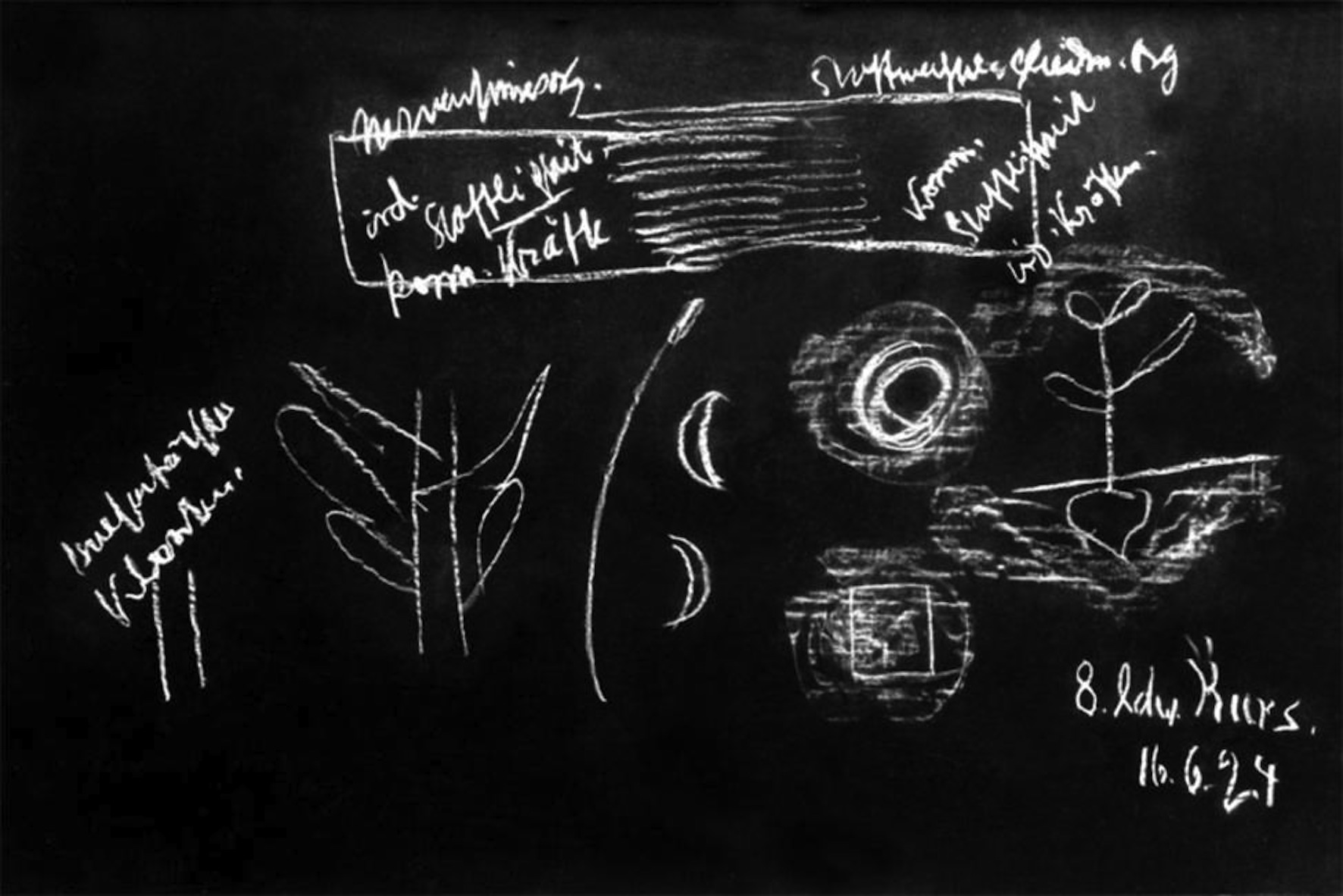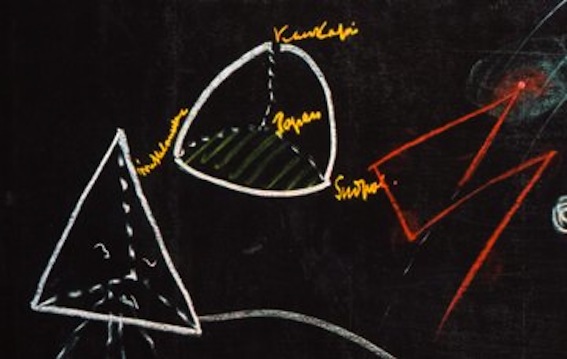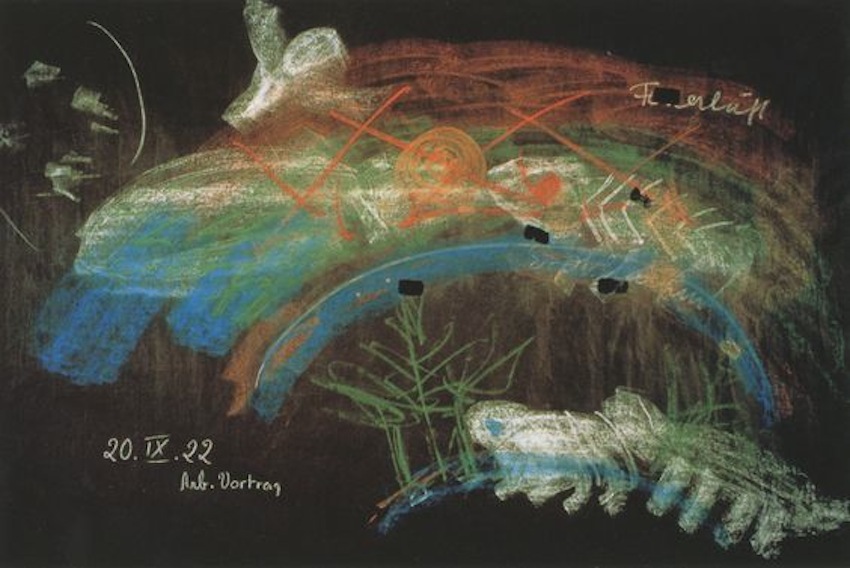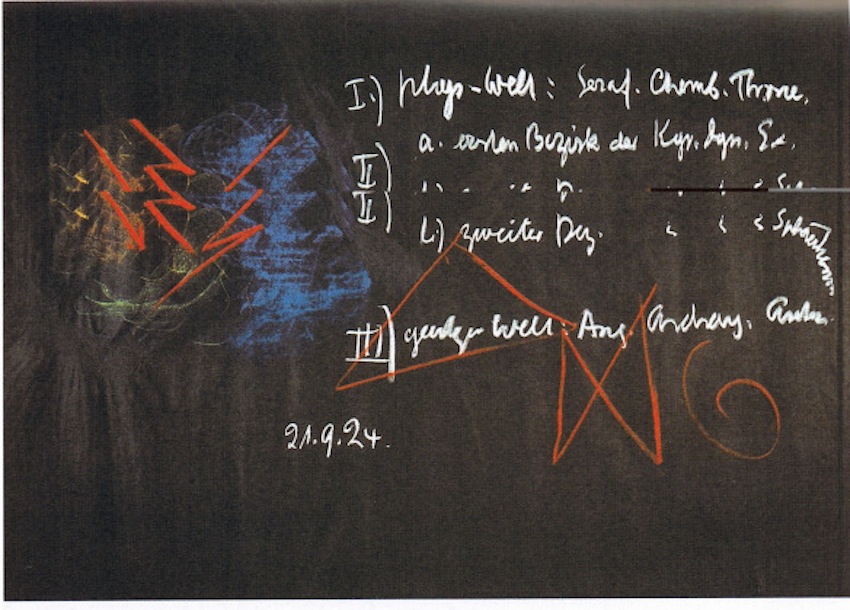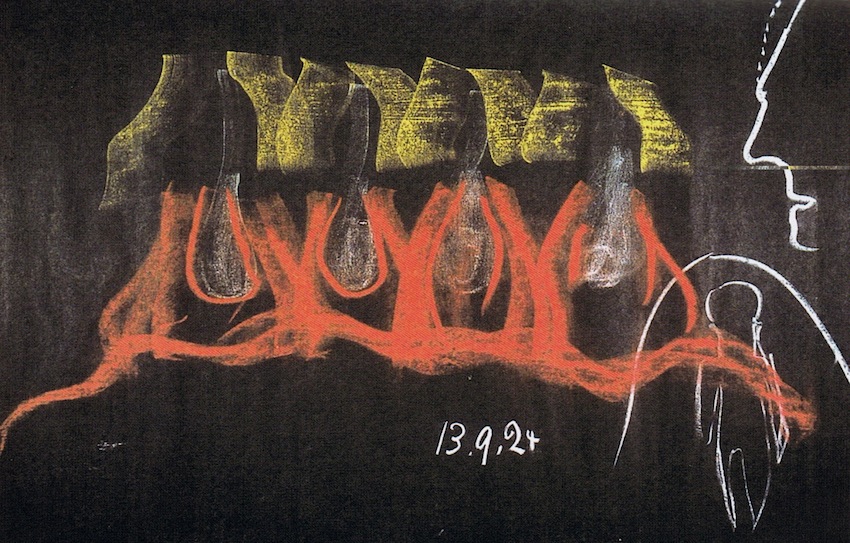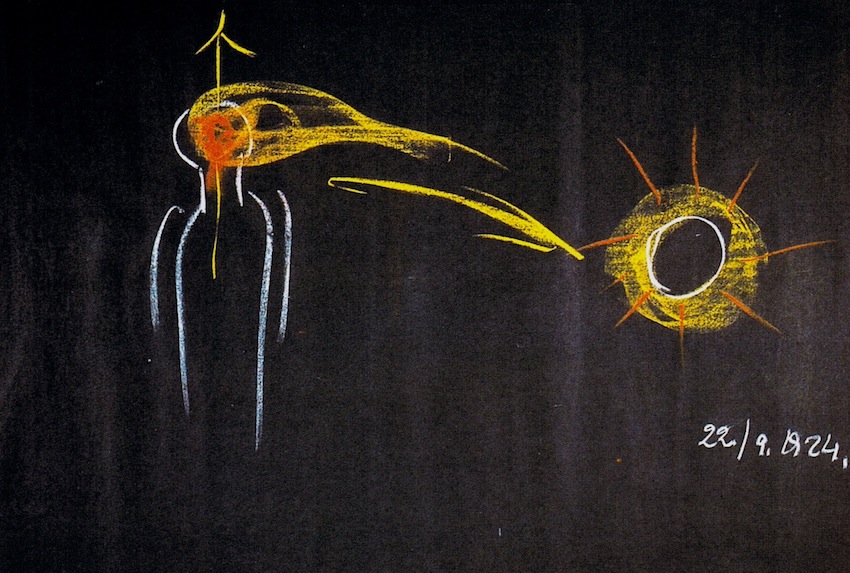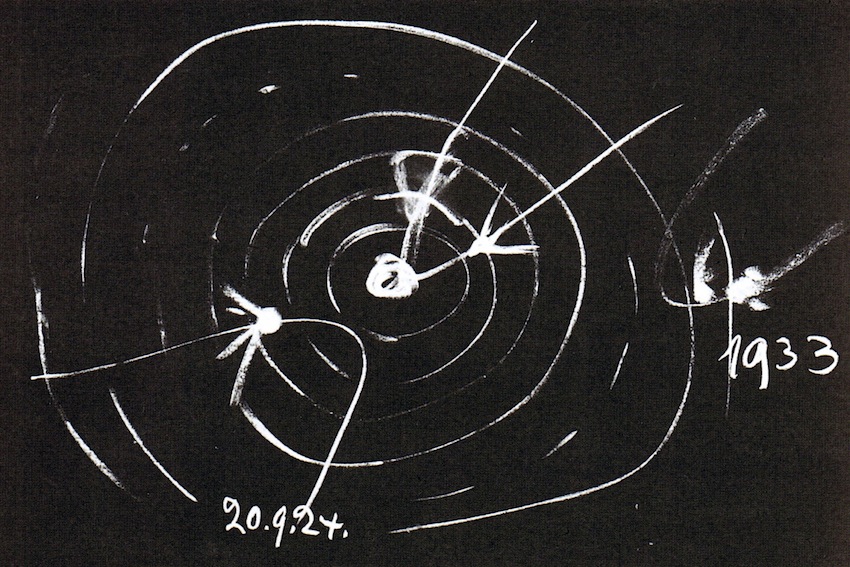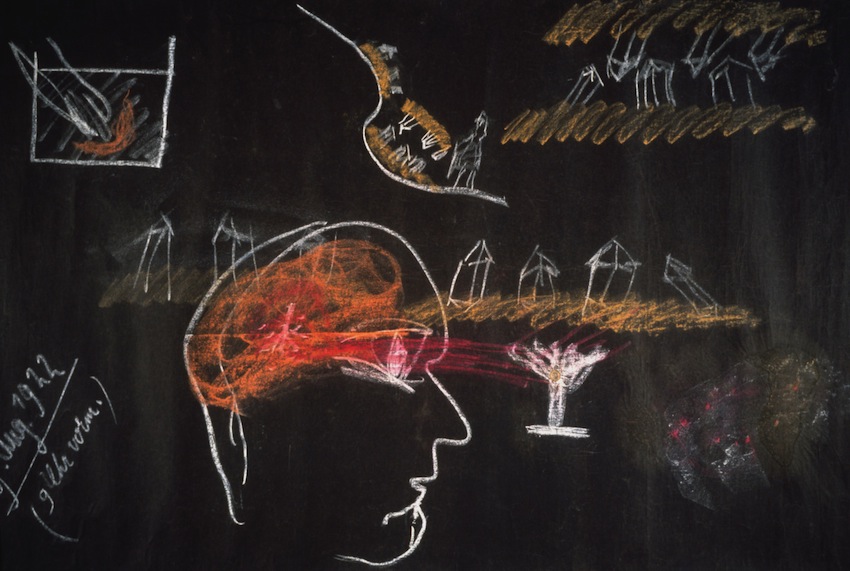Chalk, Colour & Cosmos: The Black Board drawings of Rudolf Steiner
by Barry William Hale
"Thinking is no more and no less an organ of perception than the eye or ear. Just as the eye perceives colours and the ear sounds, so thinking perceives ideas."- - Goethian Science, Rudolph Steiner
Rudolf Steiner [1861 – 1925]Austrian philosopher, author, social reformer, architect, esotericist and the founder of the Anthroposophical Society.
Steiner's Black Board drawings were essentially visual accompaniments to some five thousand lectures given during his life time many at his Goetheanums, on all aspects of Anthoposophy including but not limited to; spiritual science, biodynamic agriculture, architecture, drama, eurythmy, medicine, philosophy, religion and mysticism.
No record of the early Black Board drawings survives until 1919 when one of his colleague Emma Stolle began placing sheets of black paper over the blackboards in order to preserve these drawings. Consequently some 1100 drawings where archived and stored by the Trustees of Rudolf Steiner's Estate at Dornach near Basle Switzerland.
The Black Board drawings were not intended to be seen as artworks, rather they served as visual aids to Steiner's lectures, which were animated by a super-sensory haptic use of colour and line. In “From Space Perspective to Colour perspective” Steiner describes what we experience through colour is the unhindered movement of the soul in the cosmos. These lectures could be seen as a synergistic fusion of spoken word and gesture, bringing abstract concepts to life in a fluid form of image making analogous to the flow of concepts and ideas. Steiner termed this process of visual thinking -'Thought Pictures'.
Steiner's ideas inspired seminal artists such as Wassily Kandinsky, and his Black Board drawings directly influenced Joseph Beuys, whose philosophical perspectives resonated with Anthroposophic thought and his efforts to bring together art and science echoed Steiner's conception that both art and science stem from the same spiritual source.
The Black Boards exist out of the original context of Steiner's lectures, they stand as an a remarkable collection of aesthetic objects in there own right, an artistic testament that encapsulates Steiner's artistic theory and 'Spiritual Science'.
